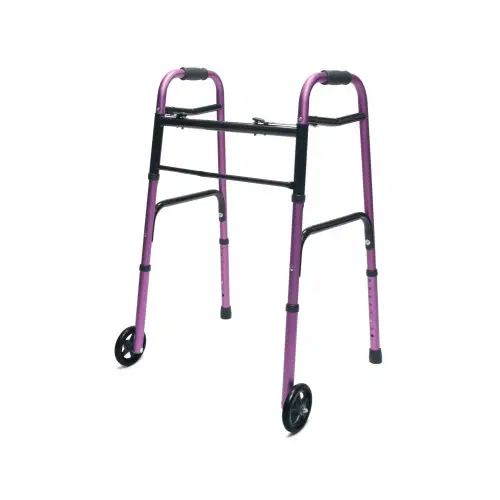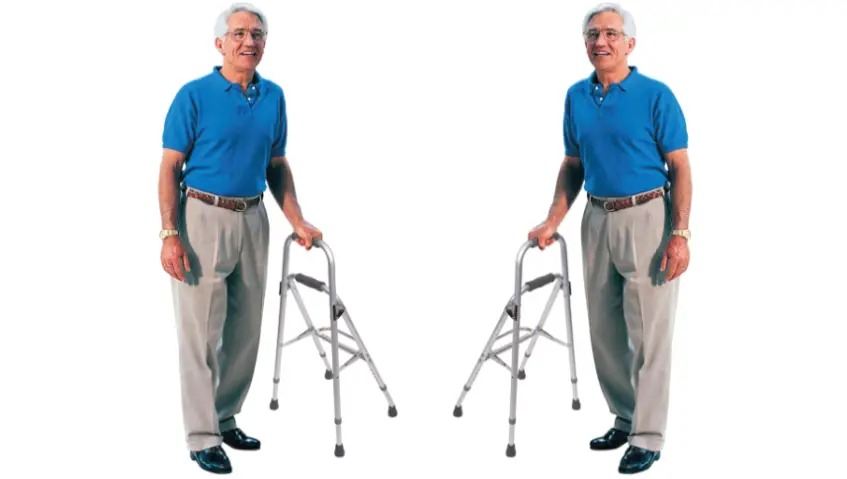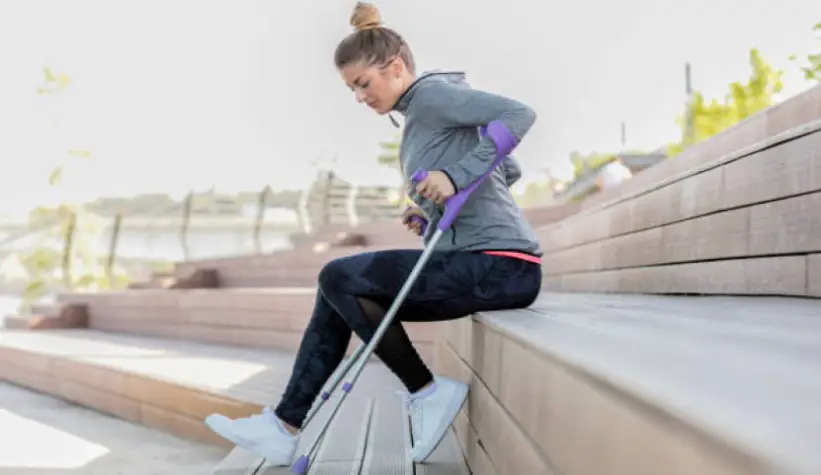The ability to move freely is a vital part of our everyday lives.
People with disabilities or others who cannot do so are at a significant disadvantage when it comes to being mobile.
The introduction of the assistive technology of walkers serves to overcome this limitation.
Walkers are mobility aid equipment for people with a disability or who need a form of support.
Also called walking frames, walkers provide extra assistance or support for people who need balance and stability due to disability and age-related physical restrictions.
The general design of most walkers requires the use of both hands.
However, there are cases of disability where the patient is limited to using just one arm. For such cases, a one-handed walker comes in handy.
Using these walkers boosts a patient’s confidence as they provide a certain level of independence for the user.
Table of Contents
- Why Walkers?
- Unique Accessories You Can Add to Your Walker
- Advantages of One Handed Walkers
- 6 Tips on Using One Handed Walkers
- Types of One Handed Walkers
- Safety Modifications for One Handed Walkers
Why Walkers?
There are diverse reasons for the introduction of walkers into the health space.
From the elderly to youth and even children with disabilities, walkers serve as equipment to aid movement.
People with back issues or those recuperating from leg or back issues can also use a walker. The use of walkers helps to lessen the pressure on a painful joint on a long-term basis.
Walkers are majorly made to be used indoors on smooth terrains. Compared with other mobility aids, walkers can be equipped with storage accessories.
Related: Pros and Cons of Forearm Crutches
Unique Accessories You Can Add to Your Walker

Customizing your one-handed walker is a great option to consider. You can choose accessories of your choice to fit into your everyday activities.
Here are some options to add to your walker.
1. Walker Baskets
The use of a walker basket is quite common. There are different sizes and shapes. They have distinct features that vary from each other.
You can use a walker basket to carry your purse, notepads, groceries, and other items.
It can be detachable with a clip-on feature.
2. Walker Pouch
Also called a walker bag, this accessory is a safer option than the walker basket. It conceals your personal belongings and makes your walker distinct among others.
3. Walker Cup Holder
A clip on the cup holder provides a clasp for cups and bottles.
This accessory makes it easy for you to be on the move with water and any other preferred drink. A walker cup holder is easy to use and is detachable in some cases.
4. Walker Caddy
This is a foldable organizer with different compartments. A walker caddy can be made specially to meet your preferences.
In the various compartments, there can be a space for bottles, books, wallets, medicine, and gadgets.
Several caddy designs provide you with a wide array of choices.
Related: Best Baby Products for Disabled Parents
Advantages of One Handed Walkers
They provide many benefits to individuals with disabilities and those prone to falls.
- 1. One-handed walkers are lighter than other walkers.
- 2. They provide a broader support base than other walking aids.
- 3. Walkers make mobility easier as they aid the transfer of weight from the legs to the upper body.
- 4. They help improve the walking balance and safety of patients. There are accessories available that allow the walker to move forward with ease.
- 5. They are ultra-portable. They can also be folded when not in use.
6 Tips on Using One Handed Walkers
The following are specific measures to be considered for the proper use of these walkers.
- 1. All the ends on your walker should be on the ground before putting your weight on it.
- 2. Avoid looking down while using the walker. Always face up.
- 3. For ease in sitting and standing, use a chair with armrests.
- 4. For a proper posture, don’t bend while using the walker. Stand upright and use the walker for support.
- 5. Don’t stand too close to the walker.
- 6. Keep your toes inside the walker and make sure there is enough space.
Types of One Handed Walkers

To discover more about four unique types of one-handed walkers, keep reading.
1. Hemi Walkers
This walker provides a broad base of support to the user.
It has a vertical piece with two legs and a handle. Another part has two other legs at an angle away from the user.
Due to medical extremities such as muscle weakness, partial paralysis, and other related conditions, some patients need continuous weight-bearing.
The Hemi walker has four legs and a balance beam equipped with a grip to support the user.
Related: Walker vs. Crutches: Here’s the Right One to Choose
2. One Hand Bariatric Side Walker
This is a lightweight walker designed for obese patients.
It is a heavy-duty walker made from composite materials.
The bariatric side walker is perfect as a source of support for bariatric individuals as it has a wider base. Using this walker will aid mobility for these patients.
There are variations of this walker with size and weight adjustments. The user can also adjust the walker’s height to preferred height requirements.
3. One Handed Wheeled Walker
Walkers with wheels provide better ease of access and mobility to the user. These walkers also provide better stability.
The one-handed walker with wheels is a unique solution for people who require assistance with walking.
It provides ease for those with weak upper body strength.
The unique features of this walker include a crossbar across the middle with a single adjustable brake. All this can be controlled with the use of one hand.
For those who require a seat, some one-handed wheeled walkers come with seats. The seats make the walker convenient to use when there’s a need to rest.
4. Lite Stroke Walker
This is designed with a one-hand grip.
A unique feature of this one-handed walker is the center grip that can be adjusted for use by either the left or right hand.
Another feature is the height adjustment, which can be made to adapt to the size of the user.
Safety Modifications for One Handed Walkers
Across the home, office, and public spaces for patients using walkers, several modifications are to be considered by all.
These modifications will increase the safety of these areas, particularly for areas with changes in surface heights.
Some of them include:
- Use of ramps in areas with steps
- Use of electronic keys for doors. This will prevent the need to lean and insert a key
- Use of lifts rather than stairs
- Use of handrails at entrances and restrooms to provide support
- Provision of wide doorways for easy access into rooms and hallways





Hi – I’m trying to get a one handed rollater like the one shown from TADQ. But can’t seem to be able to get one in this country. Can you help?
Many thanks
Regards
Sue Wallace
It’s likely a custom-made rollator designed according to the customer’s specifications.